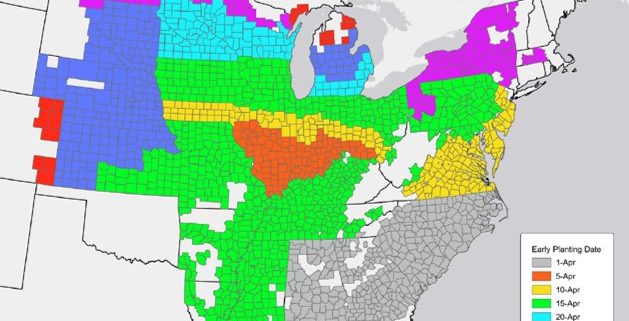Unlocking Potential: Impact of New RMA Soybean Planting Dates in Wisconsin
Research across the Midwest has shown that early-planted soybean have greater yield potential compared to those planted later. In 2023, the Risk Management Agency (RMA) worked with Science for Success Soybean Specialists across the country and shifted the earliest soybean planting date in states where data was available. In Wisconsin, the date was shifted from April 26th to April 15th in central and southern regions, and to April 20th in the northern part of the state (see Image 1). Consequently, within the 7 to 11 additional days covered by the RMA, some may be suitable for planting if weather permits. This change could allow for planting more acres earlier in the season, thus taking advantage of the yield-increasing effect of early planting.

Image 1. County level map of RMA early plant dates for soybean.
In Wisconsin, we were curious about the potential value this shift could provide to our farmers. Using 2023 National Agricultural Statistics Service (NASS) data on acres planted and total production, we estimated the additional soybean bushels that could be produced by utilizing the extra days suitable for fieldwork, covered by the new RMA dates. Across the state, there were, on average, 2 additional working days (ranging from 0 to 4 depending on the region) in 2023. During these days, we conservatively estimated that more than 110,000 acres could have been planted statewide. Assuming a 3% yield increase due to earlier planting, this could have resulted in more than 430,000 additional bushels produced in Wisconsin in 2023. Using the year’s average closing soybean price of $12.55 per bushel, an estimated additional revenue of more than $5 million could have been generated by taking advantage of the additional working days covered by the new RMA dates.



